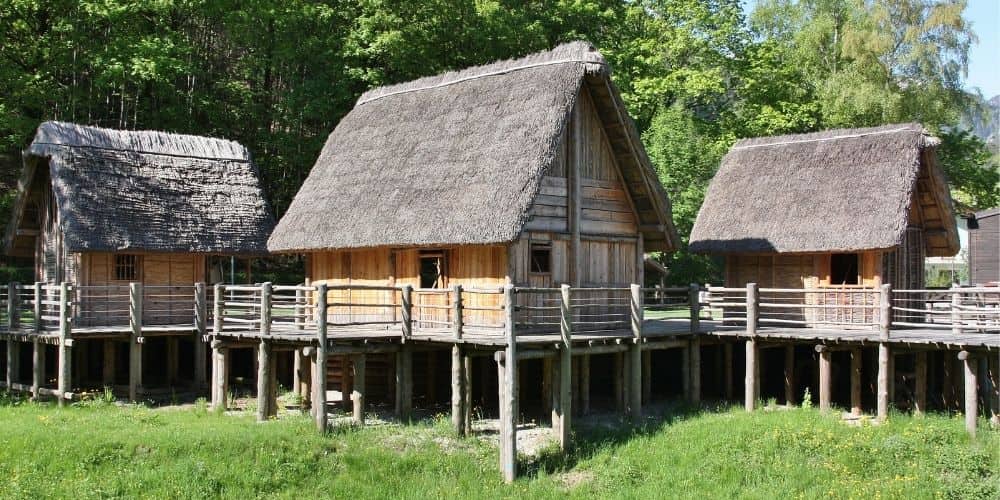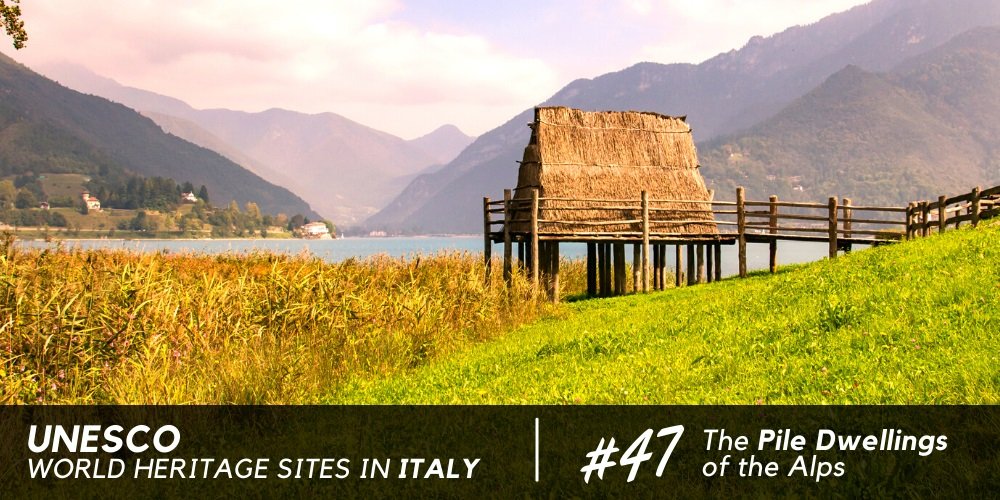The Pile Dwellings around the Alps represent the remains of prehistoric human settlements in the Alpine and subalpine regions. It is a trans-European site covering an extensive area of six countries. These extraordinary ancient remains are located in Italy, Austria, France, Germany, Slovenia and Switzerland. A total of 111 sites attest to settlements along the banks of rivers, lakes, marshes and wetlands in general.
Thanks to cross-sectoral research involving underwater archaeology, archaeobotany and archaeozoology, scholars managed to reconstruct a complete and detailed picture of the first European agricultural and pastoral communities. An essential technique has been dendrochronology, which allows wooden artefacts to be placed in time through the growth rings of tree trunks. It was possible to date and get to know the prehistoric villages, the degree of progress of the construction techniques used and, finally, their spatio-temporal evolution. Roughly 5,000 years of history are enclosed in a portion of territory that highlights the most relevant phases in the progress of human civilisation.

What are Pile Dwellings?

A pile dwelling is a typical dwelling from prehistoric times. However, this kind of house is still used by some African, Asian, and South American populations. It consists of a hut placed above a wooden platform in a horizontal position, supported by poles driven into the bottom of a lake, stream or on the banks of an area with soft, peaty soil.
This type of dwelling satisfies a twofold need: the need to defend themselves both from humidity and possible aggression or looting. Pile-dwelling populations built their villages along river or coastal areas, exploiting the water resources for agriculture and breeding. Pile dwellings are widespread throughout the world and have very ancient origins that have their roots in the Neolithic period.
Criteria for Inscription in the UNESCO World Heritage List
Here as follows, we list the criteria according to which the Pile-Dwelling Sites around the Alps have become UNESCO World Heritage Sites since 2011.
Criterion (iv): the complex of pile-dwelling sites is one of the most outstanding pieces of archaeological evidence for studying prehistoric agricultural and pastoral societies in Europe (5000-500 BC). Thanks to the particular conditions of water stagnation, the organic matter has been preserved extraordinarily, making it possible to analyse the evolution and understand the significant stages in the Neolithic and Bronze Age in Europe, specifically in the Alps area.
Criterion (v): the group of pile-dwelling sites offers an excellent, precise and detailed overview of the life of the first prehistoric and agrarian communities settled on the shores of lakes in the Alpine and subalpine regions of Europe over about 5,000 years. The archaeological evidence that has come to light offers an unprecedented and exceptional insight into the organisation of these societies and their relationship with the environment concerning technological progress and climate change.
The 19 Pile-Dwelling Sites in Italy

There are 19 Pile-Dwelling Sites in Italy, located in 5 regions: Friuli-Venezia Giulia, Lombardy, Piedmont, Trentino-Alto Adige and Veneto. As you can see from the list below, the sites are located near lakes, rivers or wetlands or, in general, are characterised by an abundant presence of water.
Most of them are grouped in Lombardy, where there are as many as 10, mainly near Lake Garda and Lake Varese. In the proximity of Lake Varese, there are the oldest pile dwellings, dating back to the Neolithic era, while the largest number of pile dwellings can be found on the shores of Lake Garda. Fewer and smaller pile dwellings can be found on the shores of the lakes of Trentino and Piedmont. Although distinguished by somewhat similar characteristics, these villages show due differences in their construction techniques due to the morphology and climate of the area.
1- Palù di Livenza - Santissima (Caneva, Polcenigo, Friuli Venezia Giulia)
2- Lavagnone (Desenzano del Garda, Lombardy)
3- San Sivino, Gabbiano (Manerba del Garda, Lombardy)
4- Lugana Vecchia (Sirmione, Lombardy)
5- Lucone di Polpenazze (Polpenazze del Garda, Lombardy)
6- Lagazzi del Vho (Piadena, Lombardy)
7- Bande - Corte Carpani (Cavriana, Lombardy)
8- Castellaro Lagusello - Fondo Tacoli (Monzambano, Lombardy)
9- Isolino Virginia-Camilla-Isola di San Biagio (Biandronno, Lombardy)
10- Bodio centrale or delle Monete (Bodio Lomnago, Lombardy)
11- Il Sabbione (Cadrezzate with Osmate, Lombardy)
12- Lake Viverone (Azeglio, Viverone, Piedmont)
13- Mercurago (Arona, Piedmont)
14- Molina di Ledro (Ledro, Trentino-Alto Adige)
15- Fiavé-Lago Carera (Fiavé, Trentino-Alto Adige)
16- Belvedere (Peschiera del Garda, Veneto)
17- Frassino (Peschiera del Garda, Veneto)
18- Tombola (Cera, Veneto)
19- Laghetto della Costa (Arquà Petrarca, Veneto)
Apart from the pile-dwelling sites and the evocative prehistoric atmosphere surrounding us, all the locations mentioned are worth visiting for their landscape and environmental value.
About the author
Written on 28/12/2021



Alessandra Festa
Did you know that there are still pile dwellings dating back to the prehistoric era in Italy? Let's discover this huge treasure.